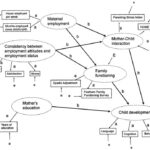Many people attribute their weight to their metabolism, believing it’s too slow. But is this accurate, and can metabolism be accelerated? While metabolism influences energy needs, weight is primarily determined by diet and physical activity. This guide provides a daily framework for optimizing your metabolism to build muscle and lose fat effectively.
Understanding Metabolism: The Energy Conversion Process
Metabolism is the body’s process of converting food and drink into energy. Calories combine with oxygen to fuel essential bodily functions like breathing, circulation, and cell repair. Basal Metabolic Rate (BMR) represents the calories burned at rest and is influenced by muscle mass, body size, sex, and age. Greater muscle mass, larger body size, being male, and younger age generally correlate with a higher BMR. Beyond BMR, calorie expenditure is also determined by the thermic effect of food (calories burned during digestion) and physical activity, with the latter being the most modifiable factor.
Building Muscle and Losing Fat: A Synergistic Approach
Focusing on both muscle building and fat loss is essential for a healthy metabolism and optimal body composition. Building muscle increases your BMR, allowing you to burn more calories at rest. Losing fat improves insulin sensitivity and reduces the risk of chronic diseases.
Here’s a structured day guide:
Morning (7:00 AM – 9:00 AM): Fueling Your Body & Setting the Stage
- Hydration: Start with 16-20 oz of water to rehydrate after sleep and kickstart your metabolism.
- Nutrient-Dense Breakfast (300-500 calories): Focus on protein, complex carbohydrates, and healthy fats.
- Example: Oatmeal with protein powder, berries, and nuts; or eggs with whole-wheat toast and avocado.
- Light Activity (15-20 minutes): A brisk walk or yoga to increase blood flow and energy levels.
Mid-day (11:00 AM – 1:00 PM): Sustaining Energy and Muscle Growth
- Protein-Rich Snack (150-250 calories): Greek yogurt, a handful of almonds, or a protein shake to maintain muscle protein synthesis.
- Strength Training Workout (45-60 minutes): Focus on compound exercises that work multiple muscle groups (squats, deadlifts, bench press, overhead press, rows). Aim for 3-4 sets of 8-12 repetitions. Prioritize proper form to prevent injuries.
- Post-Workout Meal (300-500 calories): Replenish glycogen stores and provide protein for muscle repair.
- Example: Chicken breast with brown rice and vegetables; or a protein smoothie with fruit and spinach.
Afternoon (3:00 PM – 5:00 PM): Maintaining Focus and Preventing Cravings
- Healthy Snack (150-250 calories): Apple slices with peanut butter, or cottage cheese with berries.
- Non-Exercise Activity Thermogenesis (NEAT): Increase activity levels throughout the afternoon. Take the stairs instead of the elevator, stand while working, or go for a short walk.
Evening (7:00 PM – 9:00 PM): Recovery and Relaxation
- Balanced Dinner (400-600 calories): Similar to lunch, focus on protein, complex carbohydrates, and healthy fats.
- Example: Salmon with roasted vegetables and quinoa; or lean ground turkey with sweet potato and green beans.
- Winding Down: Avoid screens at least an hour before bed. Engage in relaxing activities like reading or meditation.
- Adequate Sleep (7-9 hours): Crucial for muscle recovery, hormone regulation, and overall health.
Key Considerations:
- Calorie Deficit: To lose fat, you need to consume fewer calories than you burn. A deficit of 500-750 calories per day typically leads to a weight loss of 1-1.5 pounds per week.
- Protein Intake: Aim for 0.8-1 gram of protein per pound of body weight to support muscle growth and repair.
- Hydration: Drink plenty of water throughout the day to support metabolism and satiety.
- Consistency: Consistency is key to achieving long-term results. Stick to a regular exercise and diet routine for optimal results.
- Listen to Your Body: Pay attention to your hunger and fullness cues, and adjust your diet accordingly.
Busting Metabolism Myths
Don’t rely on quick fixes or supplements that promise to “boost” your metabolism. Most lack scientific evidence and may have harmful side effects. Focus on sustainable lifestyle changes like regular exercise and a balanced diet. Medical conditions rarely significantly slow metabolism, but if you suspect an issue, consult a healthcare professional.
A Sustainable Path to a Healthier You
You can’t magically change your BMR, but you can control how many calories you burn through physical activity and dietary choices. Regular exercise, particularly strength training, builds muscle, increasing your BMR and calorie expenditure. Combine that with a balanced diet and sufficient sleep and you’ll be well on your way to building muscle and losing fat. Remember, the key is to find a sustainable approach that you can maintain over the long term. Consulting a registered dietitian or personal trainer can provide personalized guidance and support.
References
- Goldman L, et al., eds. Obesity. In: Goldman-Cecil Medicine. 26th ed. Elsevier; 2020.
- Preventing weight gain. Centers for Disease Control and Prevention.
- Perreault L, et al. Obesity: Genetic contribution and pathophysiology.
- Piaggi P. Metabolic determinants of weight gain in humans. Obesity. 2019; doi:10.1002/oby.22456.
- 2015-2020 Dietary Guidelines for Americans. U.S. Department of Health and Human Services and U.S. Department of Agriculture.
- Physical Activity Guidelines for Americans. 2nd ed. U.S. Department of Health and Human Services.
- Dietary supplements for weight loss: Fact sheet for health professionals. National Institutes of Health.

